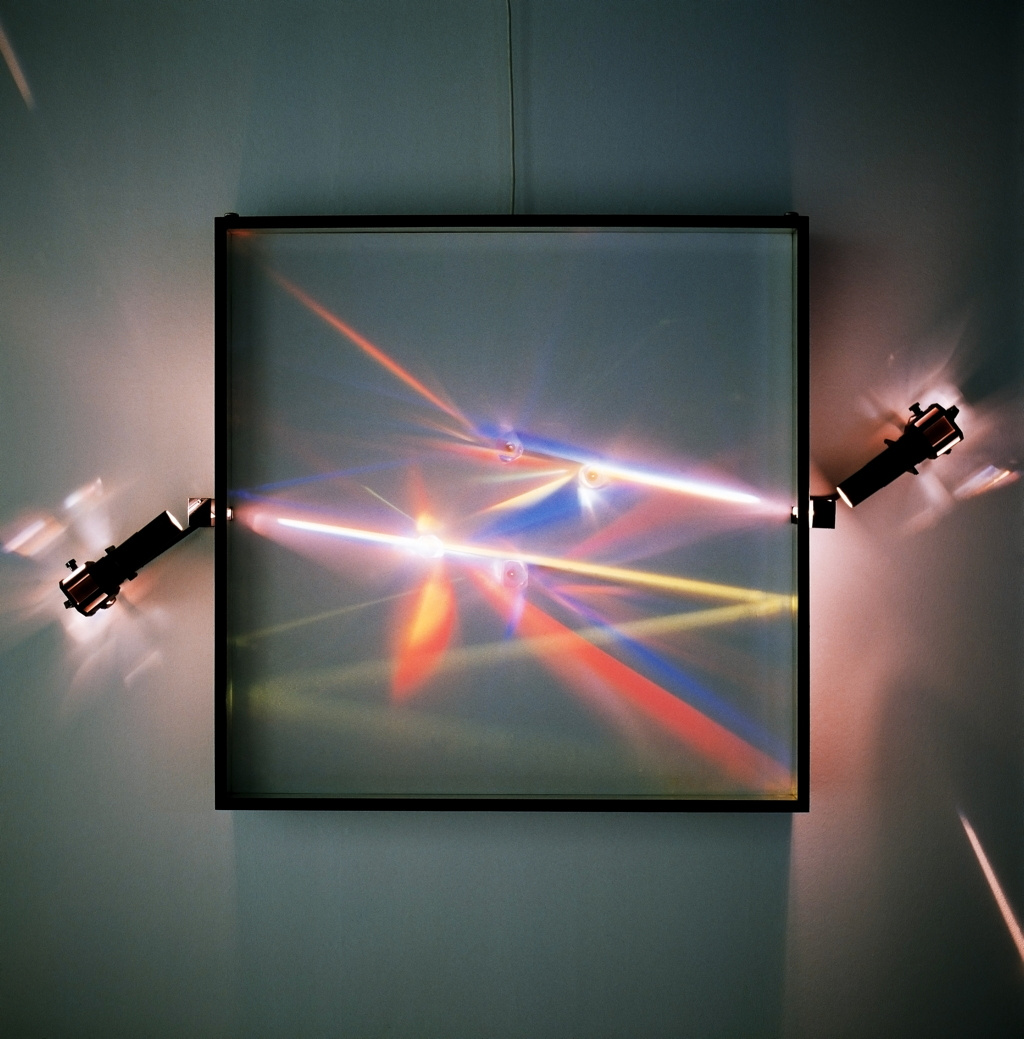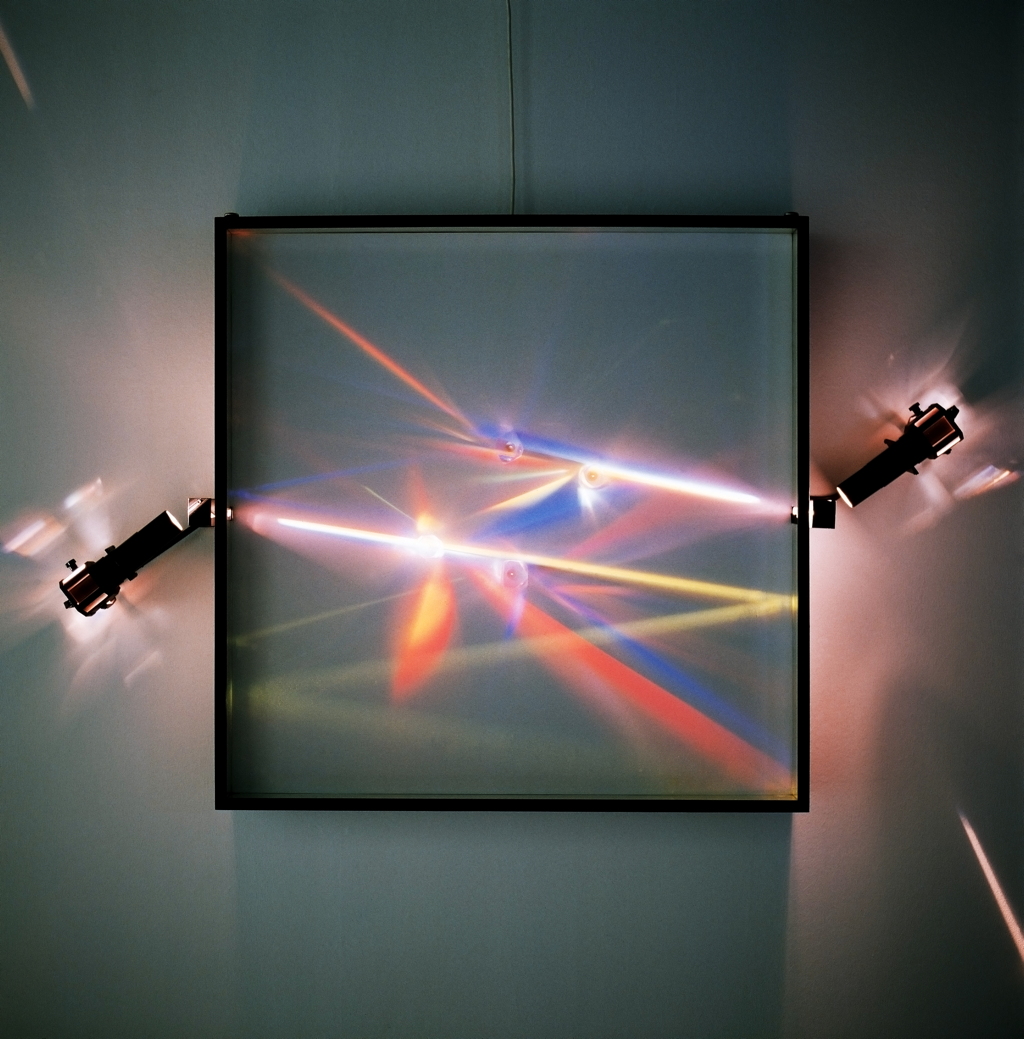Alberto Biasi
Light Prisms
1966
- Artist / Artist group
- Alberto Biasi
- Title
- Light Prisms
- Year
- 1966
- Category
- Installation
- Material / Technique
- mobile crystal prisms; acrylic blocks, electric engines, wooden case
- Dimensions / Duration
- Installation: 100 x 100 x 40 cm
- Collection
- ZKM | Center for Art and Media Karlsruhe
- Description
- "Light is at the center of the work, light that reveals the present, moving and inspiring those who pass it and cause it to break into evanescent and ephemeral images." [1] (Biasi, 2009) »Light Prisms« consists of a rectangular box with four transparent prisms arranged around its center. The geometric shapes are illuminated by two bulbs to the left and right of the box’s frame. In darkness, beams of light dance in a play of color that vary in strength and intensity of color. These constellations in all colors of the rainbow flow as the motorized crystal prisms rotate at different speeds and in different directions. The mirrored surfaces on the inside of the box cause the light beams to overlap and multiply, resulting in an atmosphere of light that is constantly changing. Biasi is an important member of arte programmata, a 1960s artistic movement which attempted to create “open works” (Umberto Eco). The movement was particularly interested in works whose moving parts were powered by small motors and which created random effects – programmed, but not entirely predictable. The first version of »Light Prisms« was made in 1962, the official beginning of this kinetic, programmed style of art, and was exhibited for the first time in the major traveling exhibition »Arte Programmata« in 1964, at the Smithsonian in the United States.[2] As the founder of Gruppo N in Padua in 1959, Biasi experimented according to the artist collective’s main principles, using materials and techniques from industrial mass production. Together with Gruppo T from Milan, the group formed the conceptual core of arte programmata in Italy. After the dissolution of Gruppo N in 1964, Biasi continued his artistic experiments alone. [1] Daniele Colossie, »Alberto Biasi: dell’ arte programmata al caos«, program, Arte Contemporanea, Brescia, 2009, p. 16. [2] The exhibition »Arte programmata: arte cinetica, opere moltiplicate, opera aperta« was organized by Bruno Munari and typewriter manufacturer Olivetti in May 1962 and held in the Gallerie Vittorio Emanuele in Milan. Thanks to Olivetti’s support, the exhibition was also shown in Venice and Rome, as well as abroad, in Düsseldorf, London and, in collaboration with the Smithsonian, in the US.
Author
Hannah-Maria
Winters


